I walked 8,089 kilometers around the Mediterranean Sea to reach the birthplace of Zeus in Crete, Greece’s largest island where the king of all gods is also entombed under a mountain that pointedly reveals his profile.
This wasn’t my first or last encounter with the lord of storm and lightning. We met when I climbed to the top of Mount Olympus and I’m on my way to Troy, where Zeus called the shots during the Trojan War that began in 1194 BC.
It was his daughter Athena – the multitasking guardian goddess of wisdom, warfare, arts and crafts who mentored Odysseus during his 20-year odyssey — who directed me to the correct Cretan cave.
“Zeus was not born, as many think, at the Diktean cave on the Lassithi Plateau but on the north side of Mount Ida, Crete’s highest mountain,” gray-eyed Athena confided to me. “Look for the big birds when you are inside.”
Before heading up to the cave on the 2,456-meter (8,057 feet) high Mount Ida, Athena suggested I hike along the seaside of a windy northeastern Crete for two days and pay a quick visit to “the island of Atlantis.”
As I MedTrekked from Heraklion to the Bay of Elounta, which I last visited when I took my 18-month old daughter there to learn Greek in 1984, I was constantly sprayed with sea and sand by the strong wind as darkness eerily replaced the mid-afternoon sun. The next day was bright, sunny and windy but a cemetery, an ancient crypt and a chapel appeared in my path.
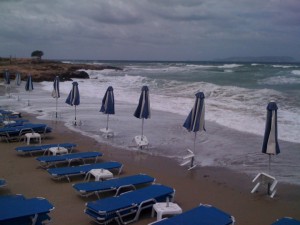
Nudists one day, Eskimos the next.
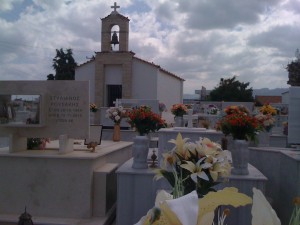
Death in a contemporary cemetery.
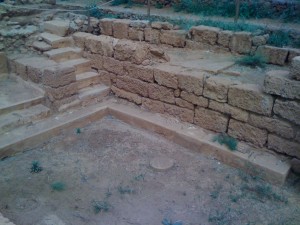
Death in an ancient crypt.
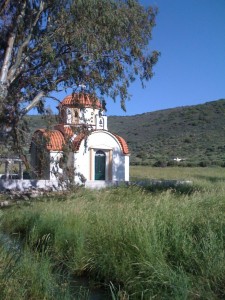
A chapel on a spring day.
Athena presumably then sent me to the island of Santorini to reflect on the size of the caldera that was the result of a volcanic eruption, powerful earthquake and tsunami in 1500 BC that contributed to the end of the Minoan civilization.

A shot of Santorini today.
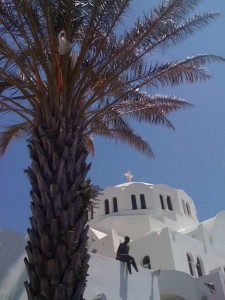
Looking at the sea-covered caldera from a rooftop.
“You must be reminded of my father’s powers,” Athena told me. “All credit and all blame, large and small, goes to him and the other gods. Now go to the cave.”

Marching uphill towards Mount Ida.
There were only a dozen people – and no one selling tickets (“The Diktean cave has done a better job of promotion,” a Greek in nearby Anogeia told me later) — when I arrived at the cave (http://bit.ly/lIs8HG) on glorious Mount Ida.
During the final climb up a rocky path to the under-promoted Idaian cave, I explained to an Austrian couple what Zeus was doing here in the first place.
“Zeus’ mother Rhea brought him to the cave because her husband Kronos had an irritating habit of devouring their children to prevent them from challenging him,” I explained. “When Zeus was born he was suckled by a goat named Amalthea, fed by a bee called Melissa and the rest is history.”
“But how does anyone know that this is the right cave?” they asked in unison.
I led them down some stairs to the bottom of a voluminous bat-filled cave and asked them to look up through the entrance.
As they did a giant bird flew over.
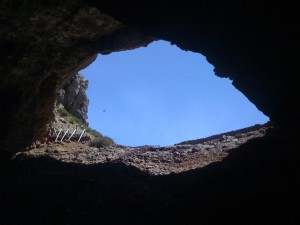
“Look for the big birds,” said Athena.
NB: To get some perspective on the size of the cave, it’s worth noting that the vulture in the left of the photo has a six-foot wingspan.
Text and Photos: Joel Stratte-McClure

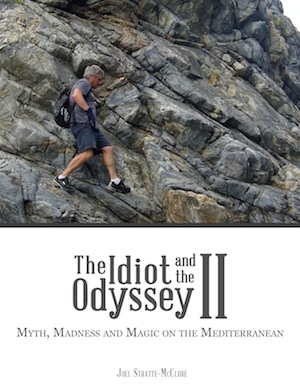


 Follow
Follow
6 Responses to The View From Zeus’ Crib